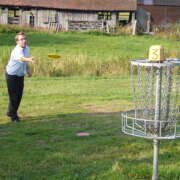Throwing yourself into high-adrenaline sports isn’t just about skill and daring—it’s about setting up your life in a way that allows you to keep doing them. Whether you race cars, ski down black diamonds, or skydive for fun, your body and mind need to be in peak condition. That means adopting everyday habits that make these intense activities easier, safer, and more enjoyable. Let’s explore the lifestyle changes you can make to keep up with your high-adrenaline hobbies.
Managing Mental Health So You Can Focus on the Thrill
Adrenaline-fueled sports demand a sharp, focused mind. But if stress, anxiety, or everyday worries are running the show, they’ll dull your edge when it matters most. Mental clarity and resilience don’t just happen—they’re built through daily habits.
One overlooked way to improve your mental state is by managing stress in your home environment. A cluttered, chaotic space often leads to a cluttered, chaotic mind, which can make it harder to fully immerse yourself in your favorite high-energy activities. Adjusting your living space to support mental wellness—whether through organization, calming colors, or a structured routine—can make a huge difference. Making changes to help your anxiety at home allows you to use your free time for what actually excites you, like tearing up a racetrack or carving fresh powder.
Beyond home adjustments, techniques like meditation, controlled breathing, and even visualization exercises can help reinforce mental toughness. The better your mind is at handling stress in daily life, the more control you’ll have over your focus when it’s go time.
Hydration is Essential for Performance
You wouldn’t let your engine run dry before a big race—so why do that to your body? Staying properly hydrated isn’t just a general health tip; it’s a non-negotiable for anyone pushing their physical limits. Whether you’re gripping the wheel at top speed or sweating through an intense climb, your body’s working overtime, and water alone won’t always cut it.
Pre-hydration starts well before you suit up. Sipping fluids steadily throughout the day ensures your body is ready to handle the heat, exhaustion, and exertion that come with high-adrenaline sports. Once you’re in the middle of your activity, having a hydration system within easy reach can be the difference between staying sharp and hitting a wall. Tools like a 64 oz bottle give you the fluid capacity to keep going, whether you’re mid-race or on the slopes.
Post-exertion, hydration helps your body recover faster, flushing out toxins and replenishing electrolytes. Sports drinks, coconut water, and even salty broths can aid in this process, but the foundation is simple: drink, refill, repeat. Making hydration a daily habit ensures that your body is always prepared for the next round of action.
Sleep Helps you get Peak Performance
Nothing wrecks reaction time and endurance faster than exhaustion. Adrenaline sports require split-second decisions and full-body coordination, both of which take a major hit when you’re running on fumes. The simplest way to improve your performance? Get serious about sleep.
Quality sleep isn’t just about clocking in hours; it’s about ensuring those hours count. Consistency is key. The right habits make it easier to recover from tough workouts and long days on the track or mountain. Investing in a good mattress, blocking out light, and cutting down on late-night screen time all contribute to deeper, more restorative sleep.
For those with packed schedules, naps can be a game-changer. A 20-minute power nap can restore alertness, while a 90-minute nap allows for a full sleep cycle, improving coordination and memory—both essential when engaging in high-stakes sports. Whether you’re prepping for an early-morning session or recovering from an intense ride, prioritizing sleep will give you the edge to perform at your best.
Recovery to Give Your Body the Care it Deserves
Pushing limits is fun—until your body starts pushing back. Recovery is often overlooked in high-adrenaline sports, but it’s what keeps you in the game long-term. Muscles, joints, and even your nervous system need downtime to repair and rebuild after intense activity.
A proper recovery routine includes more than just rest. Ice baths, foam rolling, and massage therapy help reduce inflammation and prevent stiffness. Compression gear can improve circulation and speed up muscle recovery, making it easier to bounce back for your next session.
Equally important is listening to your body. If something feels off, don’t ignore it—addressing minor aches and pains early can prevent them from turning into major injuries. Recovery isn’t a sign of weakness; it’s a strategy for longevity. When you treat your body well, it rewards you with the ability to keep pushing limits without breaking down.














Comments